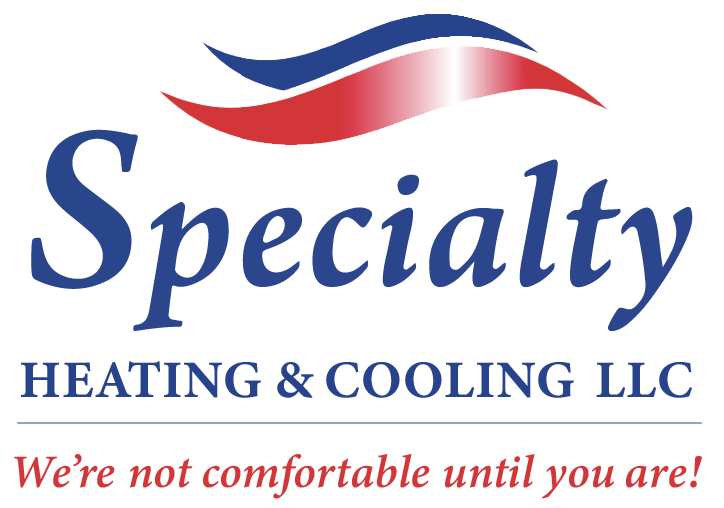Most people love their pets and view these furry friends as members of the family. It’s estimated that approximately 70% of U.S. households have a pet. While pets bring fun and companionship, they also bring along traits that can provoke allergies. These allergies can cause uncomfortable symptoms like sneezing, coughing, itchy eyes, and congestion. To alleviate the occurrence of allergies, many homeowners turn to air purifiers to remove particles called allergens and improve indoor air. But do air purifiers actually work for pet allergies? A look at the variables that determine the effectiveness of air purifiers for pet allergies can help you make the right decision for your home.
What Are Pet Allergies?
An allergic reaction is the immune system’s response to a foreign substance that it perceives as a threat. The substances that can trigger an allergic reaction are called allergens. When the body identifies an allergen as potentially harmful, it creates antibodies in reaction. This immune system response can inflame your skin, sinuses, eyes, ears, airways, or digestive system. Your immune system can perceive allergens as threats even if they are technically harmless substances like bee pollen or pet dander.
Pets produce several substances that can trigger allergies. Whether you own a dog, cat, or hamster, it is important to be mindful that other household occupants or visitors may struggle with allergies. According to the Asthma and Allergy Foundation of America (AAFA), up to 30% of the U.S. population has some type of pet allergy. The severity of an allergic reaction can vary. While there is typically no cure for pet allergies, you can possibly alleviate them. The type of pet substances that can cause allergies include pet dander, pet hair, and pet saliva.
Pet Dander
Dander is another name for the dead skin that animals shed in addition to hair or fur. All pets with hair or fur can produce dander, and it can also come from birds and other animals that have feathers instead. Dander is closely related to the term dandruff, a skin condition in humans in which an excess of dead skin flakes becomes visible. Because dander sheds off of living organisms, it is a type of biological pollutant.
Due to its microscopic size, dander can easily mix with house dust and float through the air. Dander particles can accumulate in furniture, bedding, or carpeting. These particles also form the diet of dust mites. When dander enters the mucus membranes of humans, it can cause allergic reactions in response to the dust mites that live on dander or the residual proteins from oils located on your pet’s skin.
Pet Hair
Pet hair acts as a trap for dander. When people say they are allergic to fur, they are actually allergic to the high concentration of old pet dander within fur. Each time animals naturally shed fur, hairballs can accumulate on furniture or floors and cause problems. Pet hair can also absorb pet urine and saliva, and these substances contain enough allergy-inducing proteins to trigger a reaction as well.
Pet Saliva
While puppy or kitten drool may seem cute, pet saliva is also a source of allergens. For example, when pets lick themselves for grooming, the proteins from saliva can get stuck in their fur and trigger allergies in humans. Since it is natural for cats to self-groom, it is no wonder cat allergies are among the most widespread pet-related ailments, twice as common as dog allergies.
Can Air Purifiers Work for Pet Allergies?
As long as you obtain an air purifier designed to remove particles from the air, this device can significantly help with pet allergies and improve your indoor air quality. This is especially true for confined spaces. Remember that pet allergens are tiny or microscopic particles that can remain suspended in the air for hours. Once they finally float down, pet allergens can settle on all household items, including curtains, furniture, carpet, bedding, clothes, and shoes. Using an air purifier with a special filter can help trap and remove allergens from the air before they have a chance to settle into fabric and potentially make family members feel sick.
Types of purifiers include HEPA filter air purifiers, carbon filter purifiers, and PECO air purifiers. Consulting with an HVAC professional can help you determine which one is right for you. An HVAC technician can also install the purifier. In addition to single rooms or confined spaces, your HVAC technician can talk to you about whole-home filtration to protect the entire family.
HEPA Air Purifiers
HEPA is an acronym for “high-efficiency particulate air” filters. A HEPA unit features a pleated mechanical filter that has a considerable thickness to capture a range of particulates. To meet the standards of efficiency and obtain the HEPA label, HEPA filters must have the capability of removing 99.97% of air particles that are 0.3 microns in size. These particles can include pet dander, dust, pollen, mold, or bacteria. An HVAC technician can install a HEPA purifier and also perform routine filter changes as needed.
Carbon Filter Air Purifiers
Carbon filter air purifiers use activated carbon to remove specific types of gases from the air. These devices use a process called gas adsorption in which the activated carbon traps unwanted gases. While carbon filters will not remove dander or hair from the air, these filters are ideal for removing pet-related odors. For this reason, many homeowners use carbon filter purifiers in conjunction with purifiers that contain HEPA filters.
PECO Air Purifier
PECO is an acronym for “photo electrochemical oxidation.” The purpose of PECO technology is to tackle both large and smaller air particles. Tiny allergens can include pet dander as well as the allergy-inducing proteins that animals shed naturally. Because they are so small, these contaminants can pass through traditional air purifiers and blow right back into your system.
To address this dilemma, PECO air purifiers work in two steps. First, the device’s pre-filter stage stops larger particles of pet hair or pet dander from passing through the system. Next, the system uses photo electromagnetic oxidation to perform a catalytic reaction on the pollutant. This reaction destroys the molecular composition of allergy-producing proteins and turns them into harmless organic compounds. An HVAC professional can talk to you about installing an air purifier with this technology.
Other Ways to Reduce Pet-Related Allergens
While there is no way to stop pets from releasing dander or shedding hair, you can reduce the amount of pet dander and hair that settles around your home. Pets release allergens while they play, shake out their fur, or even show affection, so it is important to establish practices to decrease the volume of allergens within the home.
Regular Bathing
Regular bathing can reduce the recoverable allergens from dogs. There are also veterinarian-recommended shampoos designed to reduce dander, so use them whenever you can. Feed your pet a healthy diet and provide plenty of water to reduce the amount of dander that flakes off dry skin.
Regular Cleaning
Another way to reduce dander is to regularly clean your home. Plenty of vacuum models now feature HEPA filters that can help remove allergens from carpets and rugs. Consistently wash your curtains and bedding to reduce trapped allergens and prevent dust mites.
Regular HVAC Maintenance
Proper HVAC maintenance can help prevent pet dander from becoming trapped in your ducts, vents, and heating and cooling systems. You should contact a technician to regularly change the filter elements over the return vents of your HVAC unit. An HVAC professional can also inspect for clogging and perform repair or replacement as needed.
Get Help Today
Air purifiers are effective tools within your plan to help with pet allergies. When you need assistance with air purification, Specialty Heating & Cooling LLC can help. We provide services for indoor air quality in Tigard, OR and the surrounding areas. For example, we can install air filters and in-duct air purifiers. In fact, we offer a complete array of HVAC installation, maintenance, and repair. Contact us at Specialty Heating & Cooling LLC to get started today.


